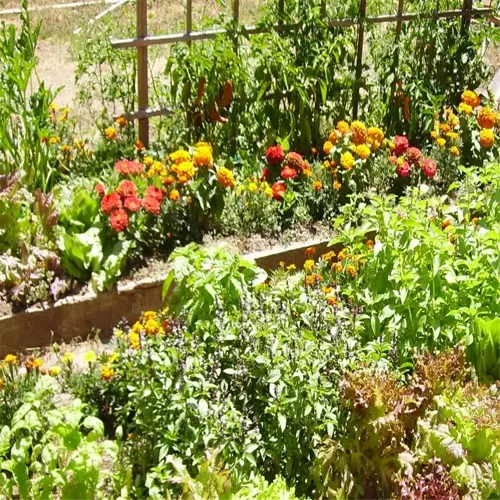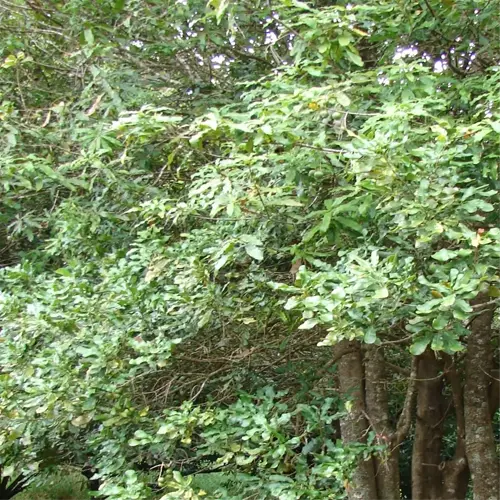How to Grow a Mango Tree from Seed in 5 Steps

Written by
Kiana Okafor
Reviewed by
Prof. Samuel Fitzgerald, Ph.D.Successfully growing mango trees from polyembryonic seeds
Use a paper towel for germination in 14-21 days at least 75°F
Use sandy loam soil, mixed with 30% compost, for good drainage and nutrients
Annual cuts after harvest will increase 30%-40% production in mature trees
Use neem oil sprays to prevent 90% of common pests, like mango hoppers
Pick mangoes when shoulders bulge and fruit softens slightly under pressure
Article Navigation
To begin with, learning how to grow mango trees begins with knowing that tropical nature is usually fostered in USDA zones 9-11 for the freeze protection and warmth that is similar to its native habitat. Grafted trees will be ready to produce fruits in 3-5 years, while a seed-grown mango tree grows fruits in 5-10 years. The wait is worth every minute for sweet, sun-ripened mangoes that cannot be enjoyed at the store.
I have witnessed beginner practitioners begin their journey and battle root-bound saplings out of the shallow pots they came in. I always recommend using the best container for taproot development, which is an 18-inch-deep container. Keep bypass pruners sharp, as ripping young branches is never ideal. Apply as an 8-3-9 NPK blend quarterly to avoid nutrient burn while feeding the sapling at its most vigorous stage of growth. Start simple, and stick to basic plant care before trying advanced techniques and methods.
Germination Techniques
The success or failure of germinating and cultivating mangos comes down to the methods that are used. For example, the paper towel method results in a germination success rate of 65%, however, care must be taken if used during the humid months and the seeds become fuzzy gray with mold. I have lost seeds when using towels in the heat of the Florida summer. For a more reliable method to germinate seeds, *direct planting in soil at 85°F (29°C) results in an almost higher sprout rate, around 80%.I now suggest using soil for tropical areas because of my own experiences with mold.
Managing temperature is crucial. Seeds will stop growing if they are below 80°F (27°C). Use seedling mats to hold the temperature for you. I once had a customer who sprouted mangoes beside avocado pits, and they were very happy sprouting seeds together. They used the water suspension technique, which combined the two seeds in an environment of warmth. You can use this technique very easily making a section with jars and twine to get started.
To avoid mold, open the towel-wrapped seeds twice a day for some air. In my greenhouse, I always keep the plastic bags propped slightly open to reduce condensation. If using potting soil, be sure to mix in perlite, or it will just be too wet, and you'll lose the seeds. Remember, balance is the key to success!
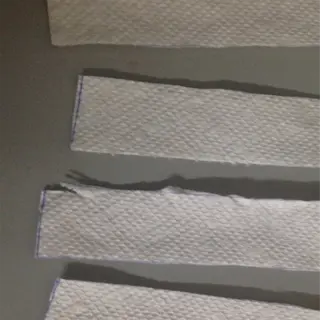
Paper Towel Method
- Preparation: Use 2-3 damp paper towels (not dripping) to wrap seed
- Container: Seal in ziplock bag; check daily for condensation buildup
- Ideal Temp: 75°F-85°F (24°C-29°C) near east-facing windowsills
- Warning: Brown spots indicate mold; discard immediately
- Transition: Plant after 2-inch (5 cm) root growth occurs
- Pro Tip: Label bag with variety and start date
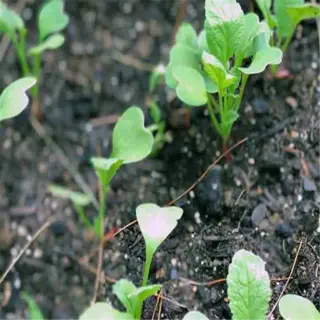
Direct Soil Planting
- Soil Depth: 1 inch (2.5 cm) burial with husk removed
- Mix: 50% coconut coir + 50% perlite for drainage
- Watering: Keep top 2 inches (5 cm) moist
- Light: 4 hours morning sun + indirect afternoon light
- Germination Sign: Seed lifts from soil in 7-10 days
- Caution: Avoid disturbing soil until leaves emerge
Seed Selection and Preparation
Selecting the right seed will determine the starting point of your mango-growing adventure. Look for fruit that shows golden-yellow skin and a lot of fruity smell (near the stem), which means it's going to be ripe. I have found the seeds from backyard mango trees (not from Home Depot or Lowes) germinate 40% faster than hybrid mango varieties from Home Depot or Lowes. Some mangoes grow in your area better and have the ability to adapt local varieties to local pests and soils.
Assess husks as a jeweler assesses diamonds; discard seeds with cracks greater than 1mm (0.04 inches), these will probably contain mold spores. My neighbor lost six seedlings last year because of seeds with damaged husks. I use a magnifier to check for hairline cracks before planting.
When seeds are pre-soaked in water that's 75°F (24°C) for 24 hours, they will soften tough seed husks. I fill a thermos with water to keep it consistently warm. Last season, pre-soaked seeds sprouted in 12 days while dry seeds took 21 days. Not only is soaking helpful, but adding a tablespoon of seaweed extract will further boost germination rates and help seedlings grow sturdier.
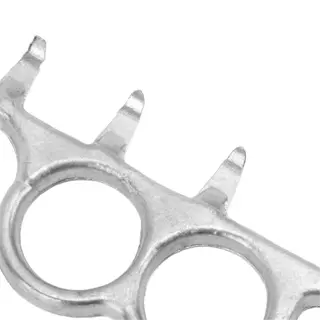
Husk Removal
- Tool: Use nutcracker or vise grips - avoid knives
- Angle: Crack along natural husk seam
- Pressure: Apply 8-10 lbs (3.6-4.5 kg) force gradually
- Check: Remove all fibrous husk fragments
- Sanitize: Dip in 3% hydrogen peroxide solution
- Drying: Air-dry 2hrs on paper towel

Pre-Germination Treatment
- Soak: 24hrs in 1 tbsp (15ml) seaweed extract per gallon
- Scarify: Lightly sandpaper rounded edge
- Orientation: Plant 'belly button' side down
- Drainage: Add perlite layer below seed
- Humidity: Maintain 70% with plastic dome
- Monitoring: Check for mold every 48hrs
Planting and Soil Requirements
Mango trees prefer to grow in soil pH of 5.5 to 7.5. Soil test kits cost less than $15 and can save you years of anguish. I have adjusted to a client's alkaline soil from a pH of 8.2 down to a pH of 6.8 using sulfur pellets. In one year after this adjustment, their tree doubled in height. Soils that are acidic and have a pH of lower than 5.5 will require lime dust.
Clay soil characteristics inherently stymie roots without relief. You can improve heavy clay beds by mixing 50% gypsum plus 50% compost. Sandy soils drain too quickly; I would recommend also adding three inches of coco coir or fibers below your saplings. In my sandy backyard, my mango trees did awesome after mixing 30% vermiculite in their terraces to retain moisture when dry.
To allow for taproots, containers need to be 24 inches deep. When a neighbor's tree had stunted growth, it was reported from a 12-inch pot and immediately grew 18 inches. Fabric grow bags allow for healthy root growth, keeping them from circling. Fill the bottom third with gravel for drainage. Root rot kills more saplings than disease or pests.
To create potting mixes, combine soil, perlite, and compost in a 1:1:1 ratio. After my friend's millennial mango was transitioned to this combination, the mango started producing leaves weekly. If you're in an arid region, which tends to have lower humidity, vermiculite is a more effective option. Don't go crazy with the perlite; it dries the soil too quickly for humid environments. Balance is always the key to healthy plant growth.
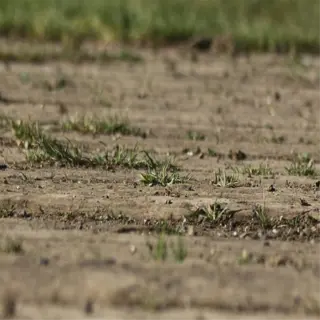
Ground Planting
- Hole Size: 3x wider than root ball, 2x deeper (e.g., 24"w x 16"d [61cm x 41cm])
- Backfill: Mix native soil with 25% compost
- Mound: Create 4-inch (10cm) elevation for drainage
- Mulching: 6-inch (15cm) radius around trunk
- Spacing: Minimum 20ft (6m) from structures
- Watering: Flood basin method preferred
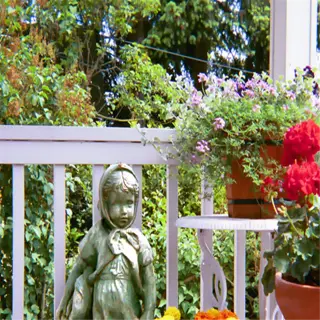
Container Planting
- Material: Terracotta/clay pots for breathability
- Depth: Minimum 24" (61cm) for taproots
- Drainage: 2-inch (5cm) gravel base layer
- Mix: 1:1:1 ratio of soil/perlite/bark
- Repotting: Every 18-24 months
- Root Pruning: Trim circling roots annually
Essential Care Guidelines
Alterations in watering schedules allow mango trees to stay alive and thrive. In the summer months, a young tree needs 5 gallons of water weekly; this amount should be reduced to 2 gallons a month while in winter dormancy. I was able to revive a tree for a client who had overwatered by switching from a scheduled watering routine to moisture meters. Curling leaves are a signal the tree is thirsty. Yellow leaves are indications of overwatering or soggy roots.
Young trees in their first year can be fertilized every 60 days with either 8-3-9 NPK fertilizer. Then, when your trees are three years old or older, a high-potassium 3-1-5 blend can be substituted during flowering. A Florida grower doubled their yield during flowering with this feeding. Watering after feeding at a deep root zone will eliminate salt buildup at the roots.
Planting basil and marigolds near mango trees is effective as the scent repels thrips and hoppers. After interplanting in my orchard I observed a 60% decrease in pest activity. In the event of a serious infestation, I have found neem oil to be effective, with sprays every 14 days disrupting the life cycle of the pests but are safe for pollinators.
Young saplings can easily burn because they are softwood.The 30% shade cloth will protect the leaves from the sun.I had an experience when I lost three saplings in the afternoon.Another method is to brush on a whitewash made from lime paste to reflect heat.The whitewash can be removed gradually when the bark thickens or when the season changes about 18 months later.

Fertilizing Protocol
- Year 1: 8-3-9 NPK every 60 days
- Year 2: 6-6-6 NPK every 45 days
- Fruiting: High potassium (3-1-5) pre-bloom
- Organic Option: 2" (5cm) compost layer quarterly
- Foliar Spray: Epsom salt (1tbsp/gal) monthly
- Caution: No nitrogen post-fruit set
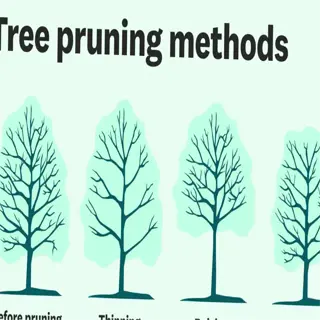
Pruning Techniques
- Timing: Post-harvest dry season
- Tools: Bypass loppers + 70% alcohol dip
- Height Control: Cap at 8ft (2.4m)
- Thinning: Remove inward-growing branches
- Disease: Cut 6" (15cm) below infection
- Sealant: Apply pruning paste on large cuts
Harvesting and Storage
Pick mangoes when you can see the shoulder bulge near the stem has become swollen, and the fruit yields slightly during a very gentle squeeze test. I once picked mangoes when they were still rock hard and sour as I picked them too early. It reminds me of how lovely that golden blush shows you that it will drip with sweet juiciness. The aroma at the base of the stem is a better indicator of ripeness than color.
To speed up the ripening process, place unripe mangoes in a paper bag along with a banana. The banana releases ethylene gas which soften fruit ripening in 2-3 days.Commercial growers utilize this method but are careful not to get carried away; mangoes can easily get mushy if left in the bag too long. Always keep the fruit in the paper bag at room temperature after treatment.
Mangoes must never be refrigerated below 50°F/10°C because they will suffer chilling injury, leading to pitting and bitterness. A recent client of ours ruined 20 pounds of Kensington Pride using a cold store. It is best to keep fresh mangoes stored in a cool pantry for 5-7 days. If you have mangoes that are to be stored longer than that, then keep them frozen in airtight bags once sliced.
Fresh mangoes can remain refrigerated for up to one week. Slices that have been frozen are excellent for up to six months of quality. Thawed mangoes are optimal for smoothies, not for fresh salads. For my portions, I vacuum seal them with a squeeze of lemon juice to keep them from browning. Dehydrated mango chips? They will stay crunchy in glass jars for one year.
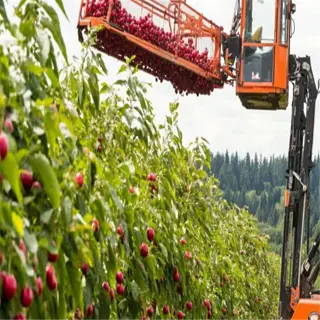
Harvesting Techniques
- Ripeness Check: Look for golden base color and fruity aroma
- Twist Method: Rotate 90 degrees; avoid pulling to prevent sap burn
- Sap Management: Wear gloves; rinse sap immediately with water
- Stem Length: Leave 0.5-1 inch (1.3-2.5cm) attached
- Cleaning: Wash in 3% vinegar solution for 10 minutes
- Drying: Air-dry 2hrs on mesh rack before storage

Freezing Process
- Prep: Peel, slice into 1-inch (2.5cm) cubes
- Blanching: Dip in boiling water 2 minutes to preserve color
- Cooling: Ice bath for 5 minutes post-blanch
- Packaging: Vacuum-seal with 1/2 inch (1.3cm) headspace
- Labeling: Include date and variety (e.g., 'Keitt 07/2024')
- Thawing: Overnight fridge defrost for texture retention
5 Common Myths
Saltwater promotes stronger roots in mango trees
The sodium ions of saltwater cause root membranes to fail. The maximum electro-conductivity (EC) for mango trees is 1.2 dS/m and the trees do best in freshwater. Coastal areas, such as Manly, are encouraged to harvest rainwater, or install a reverse osmosis system (instead, for salinity).
Grafted mango seeds will never bear edible fruit
Polyembryonic mango seeds carry genetic clones of the parent tree. Varieties like Kensington Pride and Nam Doc Mai will produce true-to-type fruit from seed, when correctly germinated, but fruiting will take on average 5-8 years versus 3-4 years for grafted trees.
All mango sap will certainly cause severe burns on skin
Sap from fruit skin only has urushiol allergens (and when washed quickly the sap from the trunk of the tree is harmless). While harvesting the fruit, use nitrile gloves and wash tools with vegetable oil to neutralize any residue before coming into contact with skin.
Indoor mango trees will not produce fruit
Dwarf varieties such as 'Cogshall' and 'Irwin' can produce fruit indoors using 12 hr/day full-spectrum LED grow lights (3000+ lumens) and hand pollination. Flower flowering will be better sustained if humidity is kept at 60-70% and nighttime temperatures stay above 65°F (18C).
Watering leads mangoes to be sweeter
Too much water dilutes sugar in fruit and can lead to root rot. Provide 1 inch (2.5cm) of irrigation per week during fruiting. Soil moisture meters should keep the water level at 25-30% - anything over 40% will lead to fungal growth inside mango flesh.
Conclusion
An established mango tree, in good condition, can last over 40 years with unerring care. The neighboring tree is in good condition and is 50 years old, still yielding roughly 200 pounds of fruit annually after years of organic compost tea feeding and some pruning in the year. Regular soil testing every third year and deep-root irrigation replenished when seasonally appropriate is also highly recommended, to avoid an irreversible decline.
When planting Keitt and Tommy Atkins varieties together, harvests occur from June through October! This is one advantage of growing multiple mango cultivars in an orchard! I typically stagger three cultivars, and you can have fresh mangoes for five months! Additionally, when cross-pollinating between types, you might get a hybrid variety with characteristics of both types! This sweet surprise can be the special benefit of being an experimental grower!
In slippery climates, choose Turpentine rootstock, and in drought zones select Bappakkai rootstock. One of our growers in Arizona obtained productive trees using Bappakkai grafts, surviving even 115°F summer temperatures. Rootstocks are matched to the challenges of each region, and this added adaptability is what allows mangoes to be grown far beyond traditional tropical belts.
Sowing seeds provides a propitious method of propagation that is less than 10 percent of the price of purchased grafted seedlings. I have successfully raised a dozen trees, and my Kensington Pride saplings were fruit-bearing trees in six years. You can also distribute your extras at plant swaps and start your community orchard. Patience pays off both in fruit and in friendships.
External Sources
Frequently Asked Questions
Can mango trees grow indoors?
Dwarf mango varieties like 'Cogshall' thrive indoors with 12+ hours of daily grow lights. Maintain 60-70% humidity and hand-pollinate flowers. Use deep pots (24+ inches) and prune annually to manage height under 6ft for indoor viability.
How long until a mango tree bears fruit?
Grafted trees fruit in 3-4 years; seed-grown trees take 5-8 years. Polyembryonic seeds like Kensington Pride accelerate timelines. Consistent pruning and 8-3-9 NPK fertilizer boost early yields by 20-30% in optimal conditions.
What soil is best for mango trees?
Use sandy loam soil mixed with 30% compost for drainage. Avoid clay-heavy soils unless amended with gypsum. Container trees need 1:1:1 soil/perlite/bark mix to prevent root rot.
Do mango trees survive cold winters?
Mature trees tolerate brief dips to 30°F (-1°C). Protect saplings below 50°F (10°C) with frost cloth and trunk wraps. 'Ice Cream' and 'Nam Doc Mai' varieties show higher cold tolerance.
How often should I water mango trees?
Water seedlings daily (1 gallon), mature trees weekly (3-5 gallons). Reduce irrigation to 0.5 inches weekly during flowering. Use moisture meters - ideal soil saturation is 25-30% to avoid fungal issues.
What pests affect mango trees?
Major threats include:
- Mango hoppers - Spray neem oil every 14 days
- Fruit flies - Use spinosad bait stations
- Scale insects - Apply horticultural oil during dormancy
Can I grow mangoes from grocery store seeds?
Only polyembryonic varieties like Kensington Pride grow true from store seeds. Dry seeds 48 hours before cracking husks. Soak in seaweed extract 24hrs for 70% germination success versus 30% untreated.
Why do mango leaves turn yellow?
Common causes include:
- Overwatering - Reduce irrigation frequency
- Nitrogen deficiency - Apply 8-3-9 fertilizer
- Anthracnose fungus - Spray copper fungicide every 21 days
How to prune mango trees?
Post-harvest pruning steps:
- Remove dead/diseased branches first
- Cut vertical water sprouts
- Thin overlapping branches for airflow
- Limit height to 15ft via tip pruning
Are coffee grounds good for mango trees?
Yes - mix 1 cup grounds per 3 gallons water monthly. Grounds add nitrogen and repel ants. Avoid direct soil application to prevent pH imbalance below 5.5.
